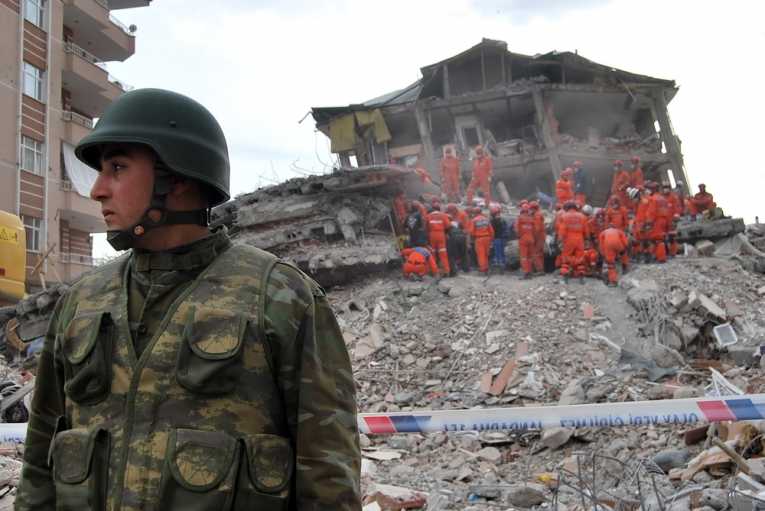Shortly after 4.00am on Sunday 20th May, an earthquake of magnitude 6.0 struck the Emilia-Romagna region of the Po valley in Northern Italy, about 22 miles north-northwest of Bologna.
Jolts and aftershocks were felt over a large area and although the death toll was reported to have been in single figures, more than 4,000 people were forced to seek temporary shelter or sleep in cars as more than 100 aftershocks, two of which had magnitudes of 5.1, rattled the region.
Experts consider that this has been the most damaging earthquake to Italy's cultural heritage since the two earthquakes that damaged the basilica of St Francis of Assissi in 1997. The Italian culture minister, Lorenzo Ornaghi is reported as saying that the cost of restoration will run to tens of thousands of Euros.
In just one small town, Finale Emilia, the cathedral, the town hall, three churches and a castle were all seriously damaged and a clock tower built in 1213 completely collapsed.
One of the problems in Italy is that although the risk of earthquake is forever present, precautions are negligible. In the 20th May earthquake, although two people reportedly died of shock, the other deaths were entirely due to the collapse of buildings. An old lady of 106 died in her own bed when she was hit by a falling beam, but four night-shift workers died in three different factories that collapsed.
One of the worrying factors was that these factories were among a significant number of collapsed buildings that were constructed within the last ten years. Italy has a number of laws that govern the construction of buildings in areas where there is a high-risk level of earthquakes, but application of the law has dragged its feet, chiefly because of the high costs of applying it.
Since the last major earthquake occurred as long ago as 1570 in nearby Ferrara, the area was never considered to have been particularly dangerous. However, it was reclassified in 2004 after fractures were discovered in the Apennines. As Gian Vito Graziano, head of the Italian Council of Geologists pointed out, last Sunday's events showed this new classification to be quite correct. The problem was that very little notice was taken of the warning.
Meanwhile earthquakes continue to happen and the big fear in Italy is that a much stronger earthquake will hit one of the southern regions like Calabria or Sicily where it is confidently predicted that the death toll would run into tens of thousands.
In recent years the biggest loss of life due to seismic activity was on 11th March 2011, in northeastern Japan when over 21,000 people lost their lives following a massive earthquake a few miles offshore that created a tsunami. This became world news, but the focus of the news was largely on the results of the earthquake, rather than the quake itself. The devastation, the loss of life and the serious risk of a massive nuclear catastrophe all took centre stage.
Earthquake news is generally very short-lived unless there is a long-running human-interest element, such as people continuing to be found in rubble a number of days after the event.
It is not considered newsworthy to report that earthquakes continue to hit Japan, with 2,055 having occurred since the disastrous one of 11th March 2011.
Similarly, in Christchurch New Zealand, in the 20 months following the destructive 7.7 magnitude earthquake of 4th September 2010, there have been a further 10,402 earthquakes, including 25 with magnitudes in excess of 5.2.
The fact is that earthquakes are happening all the time, because the earth's crust is notoriously unstable. At the time of writing, during the past 30 days in various parts of the world, there have been 6,945 earthquakes. Many have been relatively insignificant, but nearly 250 have had magnitudes greater than 2.5.
The problem is that earthquakes have always happened and nobody has yet found a certain way of predicting where and when. As far back as 373 BC the advice was to keep an eye on rats, weasels, snakes and centipedes since they would flee their homes shortly before an earthquake struck. As recently as 2009 an Italian study suggested that toads were particularly good predictors.
Often more scientific predictions will give dates, but these tend to be of the "within the next ten years" variety, while what people really want to know is if there will be one tomorrow.
Seismologists around the world are working hard at devising ways to predict earthquakes and if possible to provide some form of early warning. One exciting development is the discovery that electromagnetic signals are released from the earth's crust immediately prior to an earthquake.
Russia and the United Kingdom have agreed that in 2015 they will jointly deploy two satellites that will measure these signals. There are high hopes that this project will be able to help with future predictions and potentially save thousands of lives.










